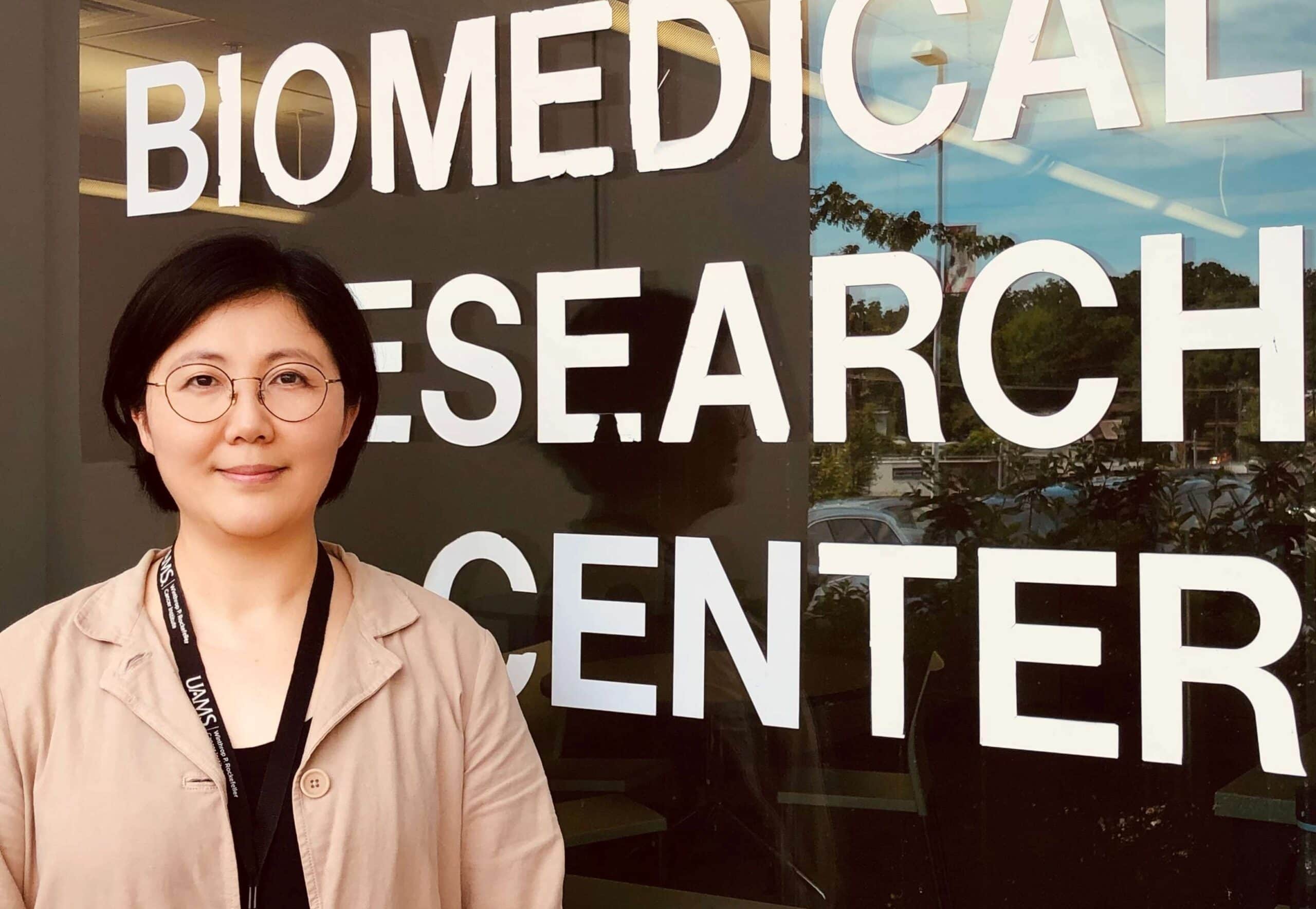NIH, NSF Fund UAMS Study of Rapid Genomic Testing to Aid Treatment of Dangerous Antibiotic-Resistant Infections
| LITTLE ROCK — Two national grants are helping researchers at the University of Arkansas for Medical Sciences (UAMS) toward their goal of providing rapid, life-saving genomic information to doctors treating the most dangerous antibiotic-resistant infections.
The study began with a $50,000 pilot award from the UAMS Translational Research Institute, which was used to gather data needed to secure a two-year, $418,000 National Institutes of Health’s (NIH) National Institute of Allergy and Infectious Diseases (NIAID) grant in 2022, and more recently, a two-year $254,929 National Science Foundation (NSF) grant.
Led by UAMS’ Se-Ran Jun, Ph.D., the study of six highly virulent antibiotic-resistant bacterial pathogens aims to harness now-affordable real-time genomic sequencing technology.
“Current genomic methods do not have fast enough turnaround times and accuracy to serve as an effective epidemiology tool,” said Jun, an assistant professor of the Department of Biomedical Informatics in the College of Medicine. “Establishing an accurate real-time genomic pathogen surveillance system for routine use would be revolutionary in clinical medicine and help make hospitals safer places.”
The team’s early results show that it can identify a specific antibiotic resistant gene within two hours and obtain antibiotic resistance profiles of Klebsiella pneumoniae isolates within six hours using real-time Oxford Nanopore sequencing data.
Klebsiella bacteria can cause different types of health care-associated infections, including pneumonia, bloodstream infections, wound or surgical site infections, and meningitis, according to the Centers for Disease Control and Prevention (CDC).In addition to helping doctors optimize antibiotic therapy, genome-based information could help hospitals identify and prevent hospital-acquired infections and their transmission.
“I am so excited because the output we generate could be translated directly into medical practice,” Jun said.
In addition to Klebsiella, the research is focusing on five other pathogens: Enterococcus faecium, Staphylococcus aureus, Acinetobacter baumannii, Pseudomonas aeruginosa and Enterobacter species. The group is known by the acronym ESKAPE.
Antibiotic resistance occurs when bacterial and fungal infections develop the ability to defeat the drugs used to kill them. According to the CDC, it is a top threat to the public’s health, and addressing it is a global priority. In the United States alone, it causes more than 2.8 million infections and 35,000 deaths per year. Immunocompromised cancer patients are especially at risk of acquiring antibiotic-resistant infections.
If able to confirm her hypothesis, Jun said the genomic surveillance system would accurately and swiftly identify pathogen and transmission routes. It would also measure how vulnerable microbes are to antibiotics along with clinical microbiology laboratory tests.
The NSF grant was approved by the Board of Directors of the Arkansas Economic Development Commission Division of Science and Technology. It enables Jun to implement data governance in pathogen surveillance with the ESKAPE project.
“We will create a multi-layered data governance plan for sequencing and analyzing bacterial pathogens collected in Arkansas,” said Jun, a data scientist who is using her expertise of real-time Nanopore sequencing, genomics, microbiomics and computer science to conduct the study.
The governance plan has five sections, each with its own unique data types and data governance needs: genomic sequencing, assembly and functional enrichment, data analysis pipelines, integrative analysis, and public health, clinical impact and scientific outcomes. A standardized pipeline for collecting and storing the data as well as its associated metadata will be created for each section.
“This is a great example of translational biomedical informatics — leveraging the latest sequencing technology for a critical application in patient care,” said Translational Research Institute Director Laura James, M.D., also UAMS associate vice chancellor for clinical and translational research.
UAMS is the state’s only health sciences university, with colleges of Medicine, Nursing, Pharmacy, Health Professions and Public Health; a graduate school; a hospital; a main campus in Little Rock; a Northwest Arkansas regional campus in Fayetteville; a statewide network of regional campuses; and eight institutes: the Winthrop P. Rockefeller Cancer Institute, Jackson T. Stephens Spine & Neurosciences Institute, Harvey & Bernice Jones Eye Institute, Psychiatric Research Institute, Donald W. Reynolds Institute on Aging, Translational Research Institute, Institute for Digital Health & Innovation and the Institute for Community Health Innovation. UAMS includes UAMS Health, a statewide health system that encompasses all of UAMS’ clinical enterprise. UAMS is the only adult Level 1 trauma center in the state. UAMS has 3,485 students, 915 medical residents and fellows, and seven dental residents. It is the state’s largest public employer with more than 11,000 employees, including 1,200 physicians who provide care to patients at UAMS, its regional campuses, Arkansas Children’s, the VA Medical Center and Baptist Health. Visit www.uams.edu or uamshealth.com. Find us on Facebook, X (formerly Twitter), YouTube or Instagram.###
